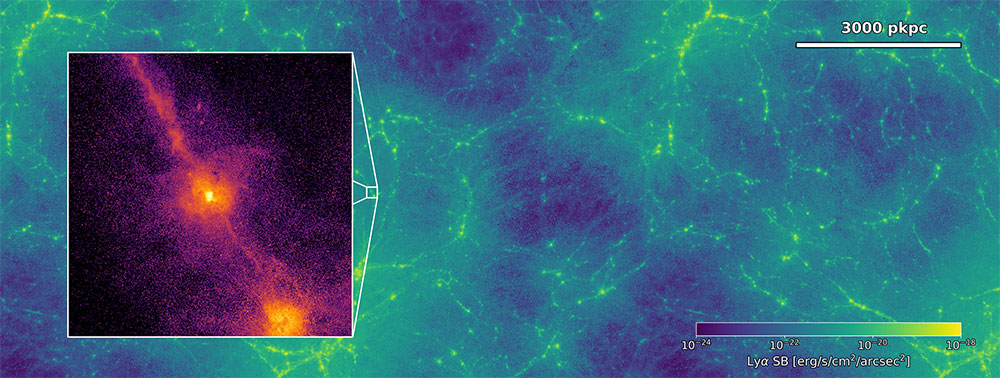Circumgalactic medium and the cosmic web
Chris Byrohl – Hector RCD Awardee Dylan Nelson
A cosmic web of galaxies and diffuse gas permeates our Universe. This cosmic web glows through faint, but measurable, Lyman-alpha emission of its neutral hydrogen. This project aims to characterize said cosmic web in cosmological simulations of galaxy formation. Connecting to upcoming observational data sets, new pathways for our understanding of galaxy and structure formation emerge.
This project studies the cosmic web and its observation through the Lyman-alpha emission line. The cosmic web is the largest spatial structure of our Universe and hosts the majority of all galaxies, dark matter and diffuse gas. Lyman-alpha radiation is emitted in large amounts by the diffuse gas and as a consequence of star-formation within galaxies. In the past, bright galaxies have been detected through this radiation, but in the near future we will also be able to detect the faint cosmic web itself. In a first step, we create a simulation modeling structure and galaxy formation, Lyman-alpha emission and its radiative transfer. This allows us to predict observational signatures of future surveys. By exploring different statistical methods, we aim to find robust statistics linking the observational signatures to their underlying matter and galaxy distribution. Our research helps to optimally design future observational surveys and provide inferences from observations to improve our understanding of structure formation.

Chris Byrohl
Heidelberg UniversitySupervised by

Hector RCD Awardee Dr.
Dylan Nelson
Physics, Informatics
